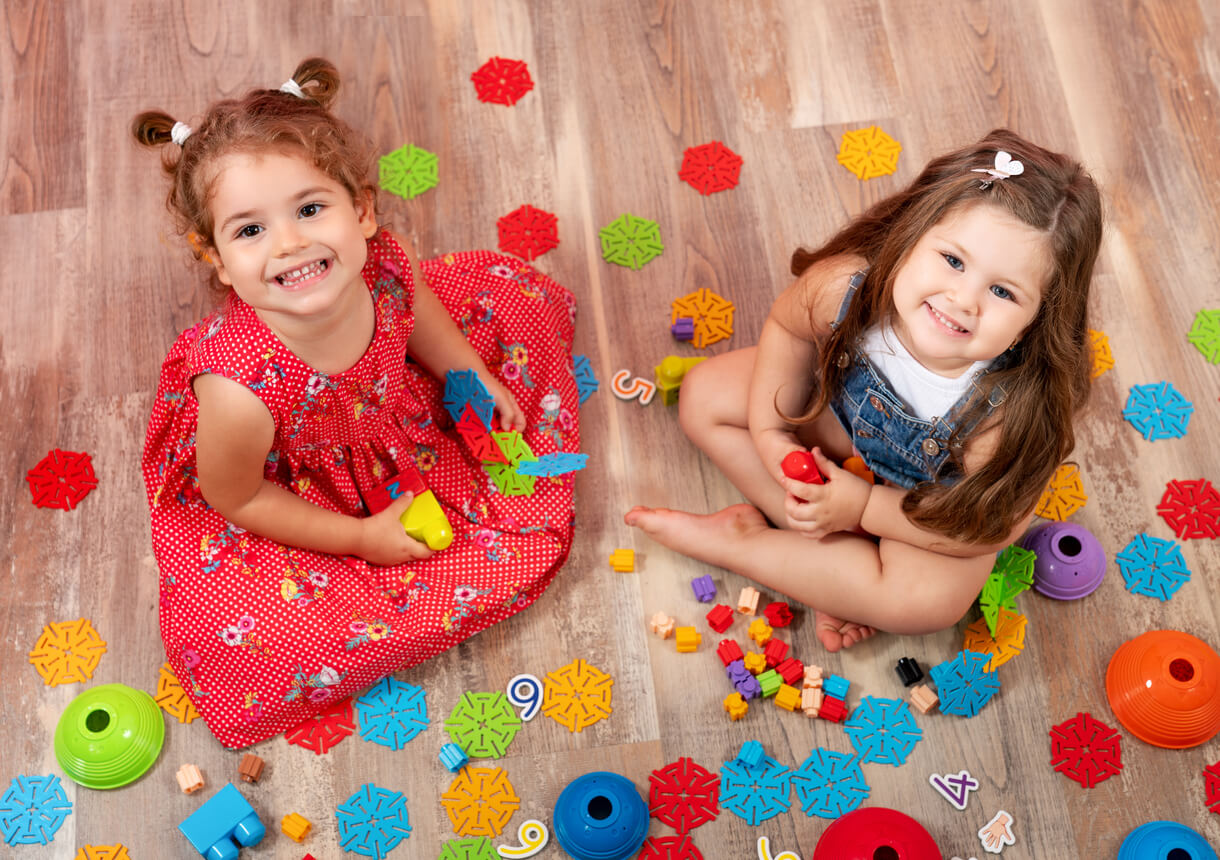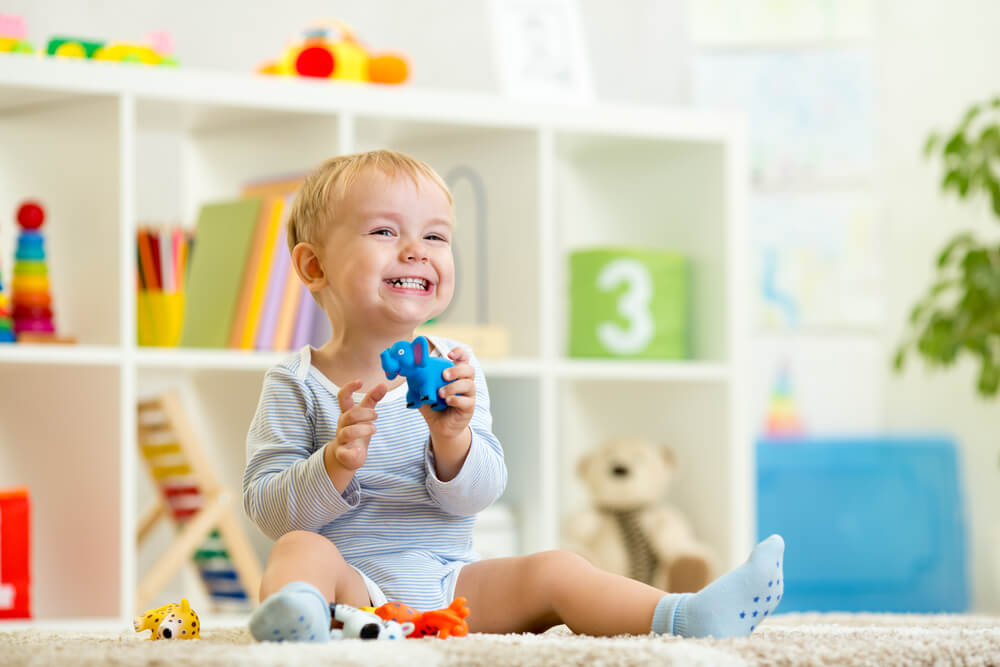How to Organize a Playroom for Children

Thinking about creating a playroom for children often represents a challenge: How to make it a space of rest and, at the same time, become that “little paradise” where they can play, explore, and move as they please? What’s more, how to facilitate these objectives without causing a headache when tidying up? Let’s take a look at some tips for organizing a children’s playroom.
You may be interested in: 5 Tips on Making Your Child’s Bedroom Multifunctional
Play, fun, and learning go hand in hand
The design of a playroom for children isn’t only about allowing them to be at ease in a room in the house, but also about encouraging their deployment.
Play offers numerous benefits to children, including the development of social, communication, and physical skills, the possibility of discovering, expressing, and processing emotions, and encouraging creativity, among many others.
But each child is different, as are the parenting choices of each family. Therefore, when designing a space of this type, try to think about what objectives you want to meet and what needs it should respond to.

Keys to organizing a playroom for children
Here are some general keys to consider when organizing a children’s playroom. Take note!
- Involve your children in the organization of the room. Assign them a task according to their age, not only to motivate them but also to help them discover their preferences: What they like to play with, what’s most comfortable for them, among other things.
- Assign different corners to different tasks. If you have space in the room, you can define a corner for resting and relaxing, with poufs, rugs to lie on, pillows, blankets, books, or music nearby. In another corner they can “produce”, so you should have a table with chairs or a rubber floor on which they can paint, color, assemble and disassemble.
- Organize toys in baskets. This way, it will be easier to play and tidy up later. It’s also important that they’re within reach of your little ones, not only to favor the children’s choices, but also for their own safety. Identify them with signs or by color, so that they know what each basket contains and can easily find what they’re looking for.
- When choosing objects and furniture, look for those that are easy to clean.
- Avoid accumulating toys and more toys. Children often have a large number of toys, which they receive from their grandparents, uncles, aunts and uncles, and classmates. However, like all things, they have their time. Today’s favorite toy will be forgotten at the bottom of the basket tomorrow. That’s why you should suggest separating some of them to give them to other children. This is a nice action and at the same time, it helps them learn not to accumulate.
- Take advantage of the walls. For smaller rooms, vertical planes can also be used to add decoration and entertainment. For example, you can choose pictures with family photos (or pictures with photos of the “best” moments – chosen by the child). Also, paint them with chalkboard paint to draw with chalk. Also, according to age, you can use weekly planners or organizers to write down their homework.
You may be interested in: 6 Tips for Organizing Bedrooms with 3 Siblings
Other recommendations to set up the playroom for children
- Establish some rules for the use of space. For example, tidy up after playing and take care of toys, don’t put shoes on the bed, and don’t eat on the reading rug. This favors good coexistence, establishes a routine, and also allows learning about the care of belongings.
- Look for harmony in the place. Avoid over-stimulating the room by choosing soft or neutral colors, and don’t overload it with decoration or objects. Minimalist spaces are better (even less dangerous), in which children can occupy as they please.
- Check safety. Making sure that cables aren’t loose on the floor, that the plugs are covered, or that hanging items are well attached to the wall is no minor issue. From time to time, it’s important to check their maintenance.

The purpose, above all…
If there’s something that should be clear at this point, it’s the real meaning of the playroom for children: It not only encourages leisure and healthy fun, but also favors expression, creativity, freedom, and free movement of the little ones.
It’s not necessary to invest large fortunes to achieve it, but to be clear about some premises, such as the organization and optimal use of space. In addition, you can recycle materials, repair and give new uses to toys, among other things. To conclude, the benefits of what happens within the “four walls” of a playroom transcend the physical dimension. In addition, it provides children with hundreds of life skills and favors an adequate integral development.
Thinking about creating a playroom for children often represents a challenge: How to make it a space of rest and, at the same time, become that “little paradise” where they can play, explore, and move as they please? What’s more, how to facilitate these objectives without causing a headache when tidying up? Let’s take a look at some tips for organizing a children’s playroom.
You may be interested in: 5 Tips on Making Your Child’s Bedroom Multifunctional
Play, fun, and learning go hand in hand
The design of a playroom for children isn’t only about allowing them to be at ease in a room in the house, but also about encouraging their deployment.
Play offers numerous benefits to children, including the development of social, communication, and physical skills, the possibility of discovering, expressing, and processing emotions, and encouraging creativity, among many others.
But each child is different, as are the parenting choices of each family. Therefore, when designing a space of this type, try to think about what objectives you want to meet and what needs it should respond to.

Keys to organizing a playroom for children
Here are some general keys to consider when organizing a children’s playroom. Take note!
- Involve your children in the organization of the room. Assign them a task according to their age, not only to motivate them but also to help them discover their preferences: What they like to play with, what’s most comfortable for them, among other things.
- Assign different corners to different tasks. If you have space in the room, you can define a corner for resting and relaxing, with poufs, rugs to lie on, pillows, blankets, books, or music nearby. In another corner they can “produce”, so you should have a table with chairs or a rubber floor on which they can paint, color, assemble and disassemble.
- Organize toys in baskets. This way, it will be easier to play and tidy up later. It’s also important that they’re within reach of your little ones, not only to favor the children’s choices, but also for their own safety. Identify them with signs or by color, so that they know what each basket contains and can easily find what they’re looking for.
- When choosing objects and furniture, look for those that are easy to clean.
- Avoid accumulating toys and more toys. Children often have a large number of toys, which they receive from their grandparents, uncles, aunts and uncles, and classmates. However, like all things, they have their time. Today’s favorite toy will be forgotten at the bottom of the basket tomorrow. That’s why you should suggest separating some of them to give them to other children. This is a nice action and at the same time, it helps them learn not to accumulate.
- Take advantage of the walls. For smaller rooms, vertical planes can also be used to add decoration and entertainment. For example, you can choose pictures with family photos (or pictures with photos of the “best” moments – chosen by the child). Also, paint them with chalkboard paint to draw with chalk. Also, according to age, you can use weekly planners or organizers to write down their homework.
You may be interested in: 6 Tips for Organizing Bedrooms with 3 Siblings
Other recommendations to set up the playroom for children
- Establish some rules for the use of space. For example, tidy up after playing and take care of toys, don’t put shoes on the bed, and don’t eat on the reading rug. This favors good coexistence, establishes a routine, and also allows learning about the care of belongings.
- Look for harmony in the place. Avoid over-stimulating the room by choosing soft or neutral colors, and don’t overload it with decoration or objects. Minimalist spaces are better (even less dangerous), in which children can occupy as they please.
- Check safety. Making sure that cables aren’t loose on the floor, that the plugs are covered, or that hanging items are well attached to the wall is no minor issue. From time to time, it’s important to check their maintenance.

The purpose, above all…
If there’s something that should be clear at this point, it’s the real meaning of the playroom for children: It not only encourages leisure and healthy fun, but also favors expression, creativity, freedom, and free movement of the little ones.
It’s not necessary to invest large fortunes to achieve it, but to be clear about some premises, such as the organization and optimal use of space. In addition, you can recycle materials, repair and give new uses to toys, among other things. To conclude, the benefits of what happens within the “four walls” of a playroom transcend the physical dimension. In addition, it provides children with hundreds of life skills and favors an adequate integral development.
All cited sources were thoroughly reviewed by our team to ensure their quality, reliability, currency, and validity. The bibliography of this article was considered reliable and of academic or scientific accuracy.
- Lara Ortega, Fernando, & Heras Sevilla, Davinia , & Cepa Serrano, Amaya (2016). DESARROLLO EMOCIONAL EN LA INFANCIA. UN ESTUDIO SOBRE LAS COMPETENCIAS EMOCIONALES DE NIÑOS Y NIÑAS. International Journal of Developmental and Educational Psychology, 1(1),67-73.[fecha de Consulta 15 de Mayo de 2022]. ISSN: 0214-9877. Disponible en: https://www.redalyc.org/articulo.oa?id=349851776008
- Meneses, Maureen, & Monge, María de los Ángeles (2001). El juego en los niños: enfoque teórico. Revista Educación, 25(2),113-124.[fecha de Consulta 15 de Mayo de 2022]. ISSN: 0379-7082. Disponible en: https://www.redalyc.org/articulo.oa?id=44025210
This text is provided for informational purposes only and does not replace consultation with a professional. If in doubt, consult your specialist.








